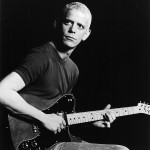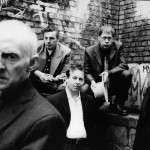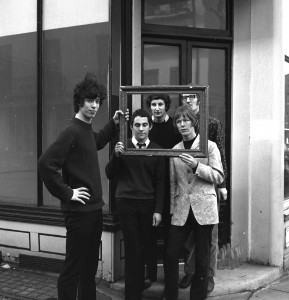-
Featured News
Patti Smith Upcoming Tour for 50th Anniversary of Horses
 By Harvey Kubernik
“Horses was like the first cannon blast in a war – frightening and disorienting. I mean, she was so unlike the FM radio terrain in every way. She was literate, aggress
By Harvey Kubernik
“Horses was like the first cannon blast in a war – frightening and disorienting. I mean, she was so unlike the FM radio terrain in every way. She was literate, aggress -
Featured Articles
Chasing the White Light: Lou Reed, the Telepathic Secretary and Metal Machine Music
 By David Holzer
Fifty years ago, Lou Reed released Transformer. In among “Walk on the Wild Side,” “Make Up” and “Vicious,” cuts that would launch a cartoon Rock N Roll Animal pers
By David Holzer
Fifty years ago, Lou Reed released Transformer. In among “Walk on the Wild Side,” “Make Up” and “Vicious,” cuts that would launch a cartoon Rock N Roll Animal pers -
The Radiators From Space Story, Part 3: Troubled Pilgrims

By Brian Neavyn
The arrival of the Radiators From Space on the Dublin scene as punk emerged was followed in early 1977 by their super-charged debut single “Television Screen.” Their move to London that autumn without lead singer Steve Rapid coincided with the release of their red hot album TV Tube Heart. On this evidence the band were very much a contributor to the new punk rock sound. This early period and the band’s interaction with the London punk scene is covered in detail in UT#35. Linking up with producer Tony Visconti as the year ended, opened up possibilities for songwriters Philip Chevron and Pete Holidai. They grasped the opportunity to pursue a musical path that their earlier pre-punk music influences determined. In early 1978, the Radiators (re-named) launched their radical new sound. The powerful and catchy glam-pop single “Million Dollar Hero” very nearly broke into the charts and was the appetizer for their unique Ghostown album, which was recorded in summer 1978.
However the punk scene was changing and developing so rapidly month by month that all acts associated with the early ‘76/’77 scene faced an uncertain reception. For the Radiators, much of their punk fanbase had peeled away by the time Ghostown was released over a year later. The delayed release did not help their cause and the band broke up in early 1981. Despite two project-focused but brief activities in the late 1980s the Radiators from Space were no more. UT#36 carries the story of the Ghostown album. The album’s literary references were woven with criticism of the state and in particular the church. This story also covers the release in 1989 of the single “Under Clery’s Clock” where Phil Chevron, in revealing his homosexuality, wrote of the dating experience of a young gay man.
Throughout the ‘90s their musical legacy attracted an ever growing international interest. The Radiators From Space reformed in late 2003 to play a Joe Strummer tribute concert. Guitarists Phil Chevron and Pete Holidai were joined for the show by original singer Steve Rapid and a new rhythm section of Cait O’Riordan on bass and Gareth Averill (Steve’s son) on drums.
The Making of Think Pink

An Interview with John “Twink” Alder by Augustus Payne
Could you tell me about the events leading up to the recording of the Think Pink. It was nearing the end of your tenure with the Pretty Things, correct?
I was playing drums for the Pretty Things and at that time, early to mid ’69, I and other members of the Pretties, had been hanging out with Steve Peregrin Took and members of the Deviants. We had performed a number of shows together and would often go out partying afterwards. I became very interested in the Deviants community spirit and began to attend their recording sessions (the last album) and photo sessions, etc.
In June ‘69 Mick Farren invited me to meet Seymour Stein and Richard Gottehrer of Sire Records, a US record label who had released the Tomorrow album in the States (the band I was in before the Pretties). We met and a deal was struck there and then for album from Twink with Mick Farren as producer. The album was recorded in July 1969 and at the end of the month my last show with the Pretty Things was at the Isle of Wight Festival (Bob Dylan also played). There was still some work to be done on Think Pink, i.e. mixing, which was done with Steve Peregrin Took and Richard Gottehrer in attendance, after I returned from a two-week holiday in Portugal in August or September.
The Attack: An Interview with Richard Shirman
By Mike Stax
Inhabiting a region of the sonic solar system somewhere between the Creation and the Small Faces, the Attack languished in comparative obscurity back in their day, only to be recognized decades later as one of the most exciting bands of the era.
That none of the band’s four singles for Decca cracked the charts was more down to bad luck and record company incompetence than any shortcomings on the band’s part. Their first effort, in January 1967, was a sharp version of the Ohio Express/Standells nugget “Try It,” backed with the great, Hammond-drenched mover “We Don’t Know.” Composed by singer Richard Shirman and lead guitarist Davy O’List, the song was nominally based on an obscure soul single, Mona Lisa’s “They Don’t Know,” with new, sarcastic social comment lyrics, including the opening salvo: “We don’t know about the H-Bomb / We don’t know about drugs / We don’t know what is going on / They say that we are thugs.”

The Attack, 1967. L to R: Richard Shirman, Barney Barnfield, Davy O’List, Gerry Henderson, Bob Hodges (glasses). (Photo courtesy Phil Smee)
While “Try It” failed to click with the record buying public, the band felt they were onto a sure thing with their next release, “Hi Ho Silver Lining,” but they were beaten to the bunch by Jeff Beck who romped into the charts with his Mickie Most-produced version after the Attack’s record was delayed at the pressing plant. The B-side was a cracker too. Based on a blistering guitar hook by O’List, “Any More Than I Do” was the Attack at their most incendiary, and still thrills every time. Totally disillusioned by the failure of “Hi Ho Silver Lining,” this lineup folded shortly afterwards, with O’List going on to the Nice.